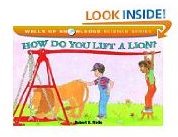A Fun Webquest About Simple Machines: A Lesson For Elementary Students
Concepts about simple machines riddle science curriculum across all grade levels. This WebQuest offers a range of learning activities
suitable for students of all ages and abilities. Teachers can mix and match activities and resources to develop a WebQuest suitable for their own classrooms, and can incorporate options to reach students at all ability and skill levels.
Setting the Stage
Choose an activity from the list below, or create your own introduction to open the subject or activate students’ existing knowledge about

simple machines.
- Share a story about simple machines. Ideas include How Do You Lift a Lion by Robert E. Wells or Simple Machines (Starting with Science) by Deborah Hodge and Ray Boudareau.
- Set up a center containing common examples of simple machines to try out.
- Send students on a scavenger hunt to find examples of simple machines.
- Challenge students to solve a problem using one or more simple machines.
- Play the commercial game, “Mousetrap.”
Ideas for Tasks to Assign
Assign a task or offer students a range of appropriate choices from this list:
(Knowledge Level)
- List the six different kinds of simple machines and find three examples of each one.
- Report on which types of jobs can be made easier by using simple machines. Find at least ten different jobs.
(Comprehension Level)
- Create a presentation showing how Leonardo da Vinci used simple machines for his inventions.
- Make up a matching test (with an answer key) about simple machines and how they are used in everyday life.
(Application Level)
- Demonstrate how to use each of the six simple machines to accomplish everyday tasks.
(Analysis Level)
- Choose a complex machine and isolate the simple machines it uses or contains. Create a presentation to explain how it works.
- Choose a Rube Goldberg-like machine and analyze the simple machines it uses.
(Synthesis Level)
- Create a new invention that uses at least three simple machines and does a practical task or solves a common problem.
- Create a Rube Goldberg-style machine to accomplish a simple task with at least five extra steps.
(Evaluation Level)
- Choose a task that has been done throughout history, such as mining, agriculture or transportation. Create a presentation tracing the history of tools for this task that shows increasing use of simple machines.
Potential Resources
In addition to textbooks and trade books with information about simple machines, many websites can be recommended as resources. Remember to preview all suggested websites to make sure they are suitable for your students.
- Edhead’s Simple Machines Games
- Best Rube Goldberg Machine
- Rube Goldberg Machines: Making the Simple Complicated
- Simple Machines Learning Site
- Inventors’ Toolbox
- Simple Machines In and Out of the Classroom
- Leonardo’s Mysterious Machinery
- Leonardo Da Vinci’s Machines
Evaluation
Evaluation of this WebQuest, of course, will vary according to the level and ability of the students that you are teaching. Remember to provide students with a clear set of expectations or a rubric that tells them exactly what you will be looking for. Aspects to consider for evaluation include:
- Task completion: Did students finish all related details?
- Credit: Was source and reference information included? Did the student cite sources in an acceptable manner?
- Comprehension: Does the student’s finished project show understanding of the concepts you wished him or her to comprehend?
- Cooperative Learning: Did students collaborate with one another in a productive fashion?
- Presentation: Was the project shared in a clear and creative manner? Did the student’s work conform to grade level standards for grammar, spelling, neatness, and/or public speaking?
